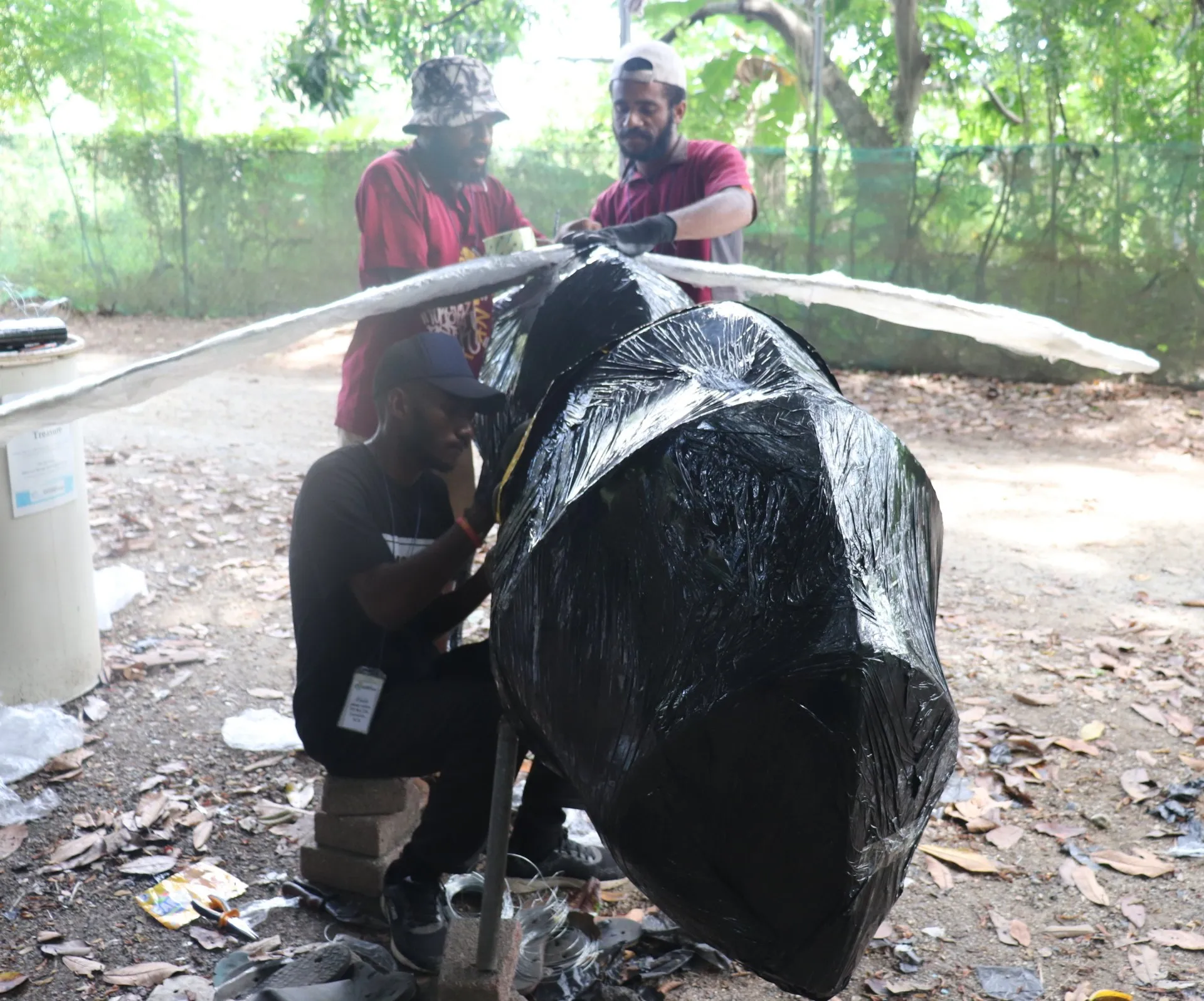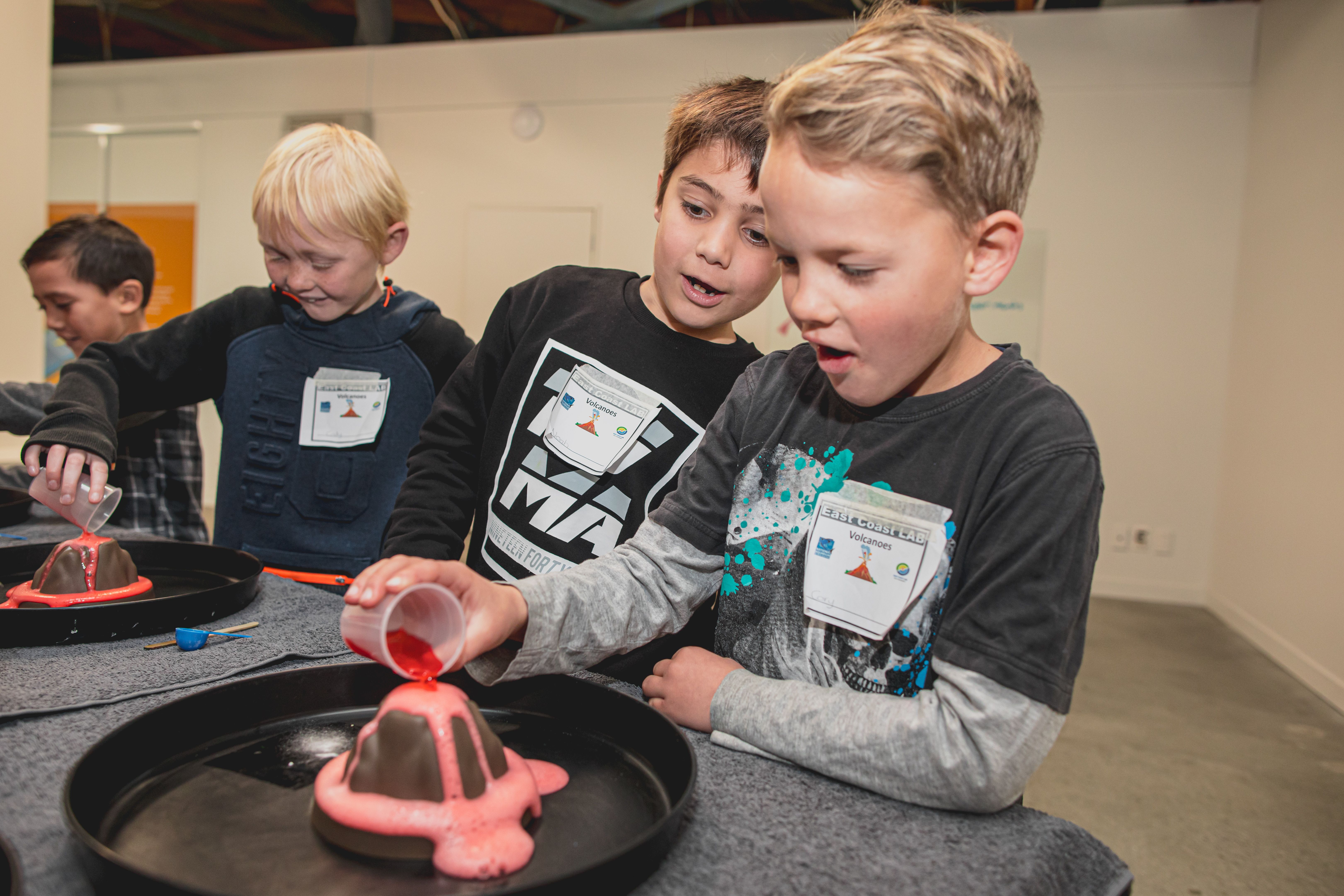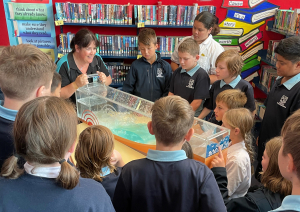How zoos and
aquariums help create sustainable communities
Sustainable Development Goal 11 ‘sustainable cities and
communities' is one of 17 goals that make up the United Nation’s 2030 Agenda
for Sustainable Development. Zoos and aquariums can work towards this goal by
endorsing inclusive, safe, resilient, and sustainable communities. This can be
done by encouraging civic engagement, social sustainability, and access to
green spaces.

Volunteers at Port Moresby Nature Park
Port Moresby Nature Park has been actively working towards
creating a more sustainable community by hosting the annual BSP Trash to
Treasure Sculpture Festival in June for the second consecutive year. Local
volunteers collect unwanted reusable trash and transform it into beautiful
sculptures that are then displayed throughout the nature park. The community
event is now into its fourth year running, continuing to educate and inspire
students and youth around Port Moresby and the Central province about the
importance of recycling.
For the youth volunteers, their involvement in the BSP Trash
to Treasure Sculpture Festival is part of their community leaders’ efforts to
inspire them that living in a settlement should not limit their opportunities.
The Port Moresby Nature Park team and all its volunteers have been hard at work
putting together the final sculptures for the festival which will be held from
the 4th of June to the 3rd of July.


NANZ's Hikurangi Subduction Zone educational program
The National Aquarium of New Zealand (NANZ) have also been
working towards creating a more sustainable community by helping their
governing body, the Napier City Council (NCC), meet its long term and annual
planning targets and help lead and represent the Napier community. Part of this
responsibility includes empowering and encouraging community participation in
decision-making, while also considering the needs of people currently living in
the community and the future generations who will live there.
NANZ constantly seek opportunities to reach beyond their
walls and help their community connect with their local environment. This
includes partnering with Biodiversity Hawke’s Bay, a regional community-led
organisation enabling action for biodiversity, to develop a month-long campaign
called the ‘Beautiful Bay in May’. The
campaign aimed to inspire the local community to participate in 31 simple, fun,
and creative activities out in nature throughout May. The activities were tailored specifically to
build or enrich the community members’ relationship with nature – a
psychological construct called Nature Connectedness.
NANZ is situated in a beautiful seaside position in Napier,
Hawke’s Bay, on the eastern coast of New Zealand’s North Island. It’s also
perched on the edge of the Hikurangi Subduction Zone, the dynamic boundary
where the Pacific tectonic plate dives under the Australian tectonic plate.
Scientists are certain that it is not a matter of if, but when, the next large
earthquake and tsunami will occur along this boundary. So NANZ has partnered
with EC LAB to have a physical exhibition space in the aquarium showcasing
content around the Hikurangi Subduction Zone and how to prepare for natural
hazards risk, in addition to onsite educational programming for schools.
.png)
.png)
Kiwi Birdlife Park in the 1980's versus today

For Kiwi Birdlife Park, their efforts to create a more
sustainable community look a little different. Since 1985 the land that the
park sits on has been completely transformed from a dumping ground to a
beautiful oasis for native wildlife. In the 1980’s the site was a popular
dumping ground taken over by car bodies, rubbish, invasive weeds, and huge pine
trees. Soon after the land was first leased by the founder, Dick Wilson, he,
his son, and other members of the whanau got to work clearing as much as they
could by hand. Now 37 years later, around 18,000 native trees have been planted
around the park and 129 invasive pine trees have been felled. Over the last 9
years, they have focused on removing the pine trees which are a huge problem
across New Zealand. The invasive species threaten New Zealand's native
vegetation, whilst also providing unsuitable habitat for their native wildlife.
Since the park was founded, it has undergone an incredible transformation,
becoming a real asset for the local community and its wildlife.
Taronga Conservation Societies ‘HATCH’ program aims to inspire,
support, and launch innovative ideas and actions to help address some of the
most pressing environmental and conservation challenges currently facing our
planet. They aim to inspire people from all different backgrounds to create new
start-up ventures that will create positive environmental change in their
community. This program includes expert webinars, a free 6-week idea generation
program, a pre-accelerator program, and the HATCH accelerator program. All HATCH initiatives must align with the
United Nations Sustainable Development Goals (SDGs) and to Taronga’s 360-degree
approach to conservation. Taronga’s approach to conservation recognises the
importance of zoos in creating and maintaining sustainable communities. They recognise
that to achieve successful conservation of species they must consider and support
the habitat in which the species live, and the communities that interact with
the species and habitat.